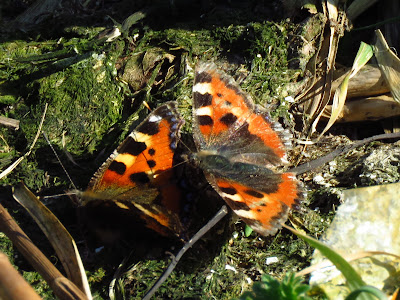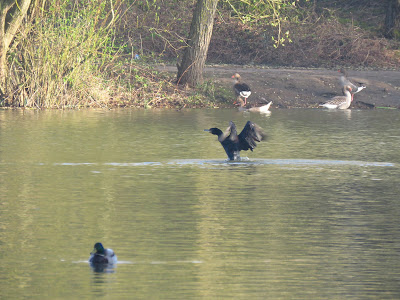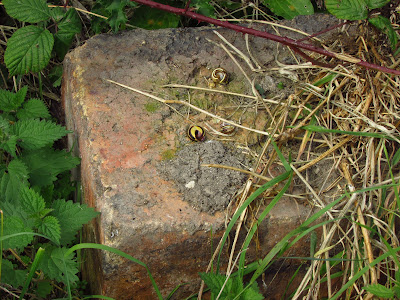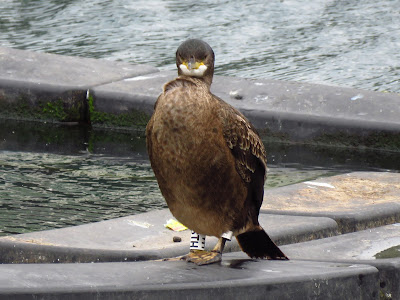
The first year anniversary of the first lockdown. I take a walk to the city centre, the Marina and the Deep and Victoria Dock. I want to see the Shag that has been seen in the last few days at Princes Quay.
I walk around Queens Gardens. A Mistle Thrush (above) sings from one of the poplars. The female is probably sitting on eggs nearby. There are three pairs of Greylag around one of the ponds. A female is sitting on a nest. The male keeping watch close by.
Greylag on nest.
Then I move onto Princes Quay. A few mallard, a few gulls (only 3 Black-headed gulls about) and a fly over Grey Heron.
Grey Heron.
I find the shag (top shot) in the far end of the quay. Shags are quite uncommon birds in the Hull area. There was one at East Park for a week or so in December 2018 and they are occasional in the Humber, where records tend to be in the winter months. In February 2018 I saw one in the Humber, it had a blue ring, but I couldn't read it. The shag in Princes Quay also has a ring, its finder, fellow naturalist @scarpermac on Twitter reported it. This bird was confirmed to have been ringed as a chick, one of a brood of three, last June in the Isle of May, an island at the mouth of the Firth of Forth in Scotland.
Shag showing the white darvic ring with large code STH.
I make use of the new Murdoch connection bridge, allowing panoramic views of the Marina and the Humber.
I walk to the Half-tide basin, the footpath is now opened around the basin itself. A pair of Coots in the basin and two Pied Wagtails are the highlights. With the binoculars, I spot two crows crossing the Humber, not something I see every day.
A lone Common Gull in the half-tide basin. There were plenty around today, by the Humber, but not as many in the parks and playing fields.
View from the half-tide basin corner.
Two crows appear to cross the Humber together.
I return via Victoria Park. A Chiffchaff sings.
A large boat manoeuvring to enter Albert Dock.
I spot a Curlew on the river Hull by Scale Lane bridge. It's plumage makes great camouflage on the mud banks.
I notice some footprints on the muddy banks of the river by Scale Lane bridge. They look like a roe deer track
And these look like Grey Squirrel prints. I have some records in Queens Gardens and Victoria Dock Village.
As I walk through Trinity Market people are sitting on picnic benches having their lunch. There are some Lesser Black-backed gulls landing to catch some tidbits. Earlier, they had been patiently waiting for lunch time atop some chimney pots.
In Victoria Square, a 5 year old Herring Gull, still with a black smudge on its lower bill, adopts a chick's begging posture and calls like when a female begs to its male, trying to coach some food from people lunching.
Herring Gull begging.
One of the walk's highlights was to briefly glimpse a Peregrine over the city. After taking this shot, it disappeared high in the sky.
And these Buzzards were displaying over Princes Avenue.






















































